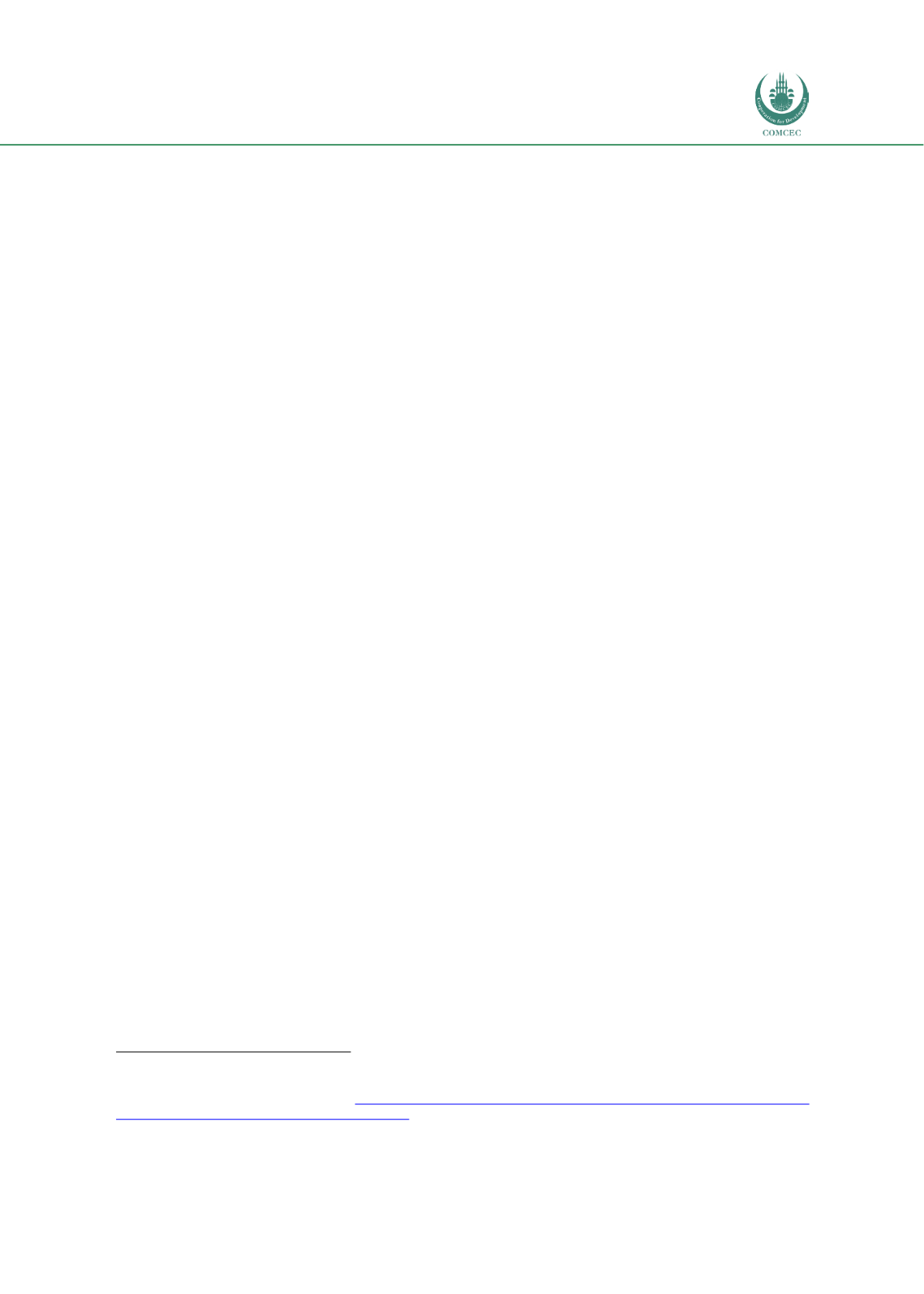

Infrastructure Financing through Islamic
Finance in the Islamic Countries
57
will be applied to finance the construction of that component. The returns for Islamic banks
and financial institutions will be tied to this specific part of the project asset.
One of the first infrastructure projects in which the Islamic finance tranche was used was the
financing of the USD 1.8 billion Hub River Power Project in Pakistan in 1994, which was also
the first private infrastructure project with limited recourse in the country. Al Rajhi Bank and
Investment Corporation and IICG Islamic Investment Bank financed a USD 92 million bridge
financing facility in the form of
istisna
to procure and install power turbines for the project.
13
Challenges and Prospects
As indicated there a few factors that can inhibit the participation of Islamic banks in project
financing. Since most of the Islamic banks are relatively small in size, they do not have the scale
to invest in larger projects, even if syndicated. An issue about direct investments can also
introduce liquidity risks and the funds can be locked in illiquid investments for a long time.
This would also imply higher capital requirements that most banks prefer to avoid. Given the
above, banks would prefer to invest in high-rated project sukuk that are liquid and require
them to hold lower capital.
Case Study of Islamic Syndicated Finance: Master Wind Energy Limited (Pakistan)
14
Master Group in Pakistan established Master Wind Energy Limited (MWEL) to establish a wind
farm project in line with the desire of the Government of Pakistan’s (GoP) to increase the share
of renewables and reduce dependence on thermal generation in the energy sector. The
Alternative Energy Development Board (AEDB) provided 1,408 acres of land in Jhimpir, Sindh
to MWEL on a 20 year concession period to establish a wind farm. The total project which
consisted of 33 wind turbines to generate 50 MW of electricity had a cost of USD 132 million.
While USD 32 million was sourced internally, USD100 was raised from external sources which
was split equally between the US-based Overseas Private Investment Corporation (OPIC) and a
syndicate of Islamic banks.
The Islamic banks syndicate included Meezan Bank Limited, Habib Metropolitan Bank Ltd. and
Bank of Punjab. In the construction phase, Islamic financiers and project sponsors entered into
a musharakah partnership (MWEL) under which the partnership co-owned the project assets
at an agreed upon ratio. While the financiers appointed Meezan Bank as their agent, the
musharakah agreement appointed MWEL to construct the project assets. Under the agreement,
MWEL was also responsible for operations and the maintenance of the project assets. After the
completion of the project in October 2016, in the operational stage MWEL leased the assets of
financiers under an
ijarah
contract and paid rentals on a quarterly basis.
13
See Clifford Chance (2009) and Hamwi and Aylward (1999) for a discussion.
14
Information on the case study is taken from World Bank et. al (2017) and “2.8MW wind power plant starts operations”,
Daily
Time
,
October
16,
2016,
https://dailytimes.com.pk/51865/528mw-wind-power-plant-starts-operations/; http://www.masterwind.com.pk/project_mwel.html















